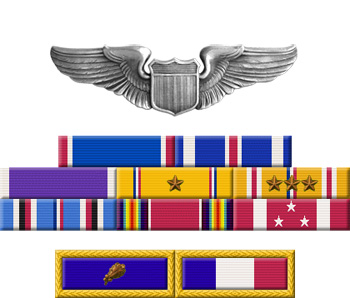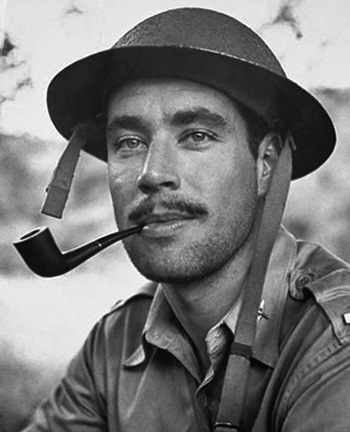
|
Boyd D. Wagner |
 |
|||
| Rank, Service | ||||
Lieutenant Colonel, U.S. Army Air Forces |
||||
| Veteran of: | ||||
|
||||
| Tribute: | ||||
Buzz Wagner was born on October 26, 1916, in Emeigh, Pennsylvania. After completing three years of college at the University of Pittsburgh, he enlisted in the Aviation Cadet Program of the U.S. Army Air Corps in June 1937, and was commissioned a 2d Lt and awarded his pilot wings at Kelly Field, Texas, on June 16, 1938. Lt Wagner's first assignment was as a P-36 Hawk pilot with the 27th Pursuit Squadron of the 1st Pursuit Group at Selfridge Field, Michigan, from June 1938 to December 1939, followed by service with the 17th Pursuit Squadron, also in the 1st Pursuit Group, at Selfridge Field from December 1939 to December 1940, and then deployed to the Philippines from December 1940 to December 1941. During this time, Capt Wagner served as Commander of the 17th Pursuit Squadron from September 1940 to December 1941, and was credited with the destruction of 5 enemy aircraft in aerial combat during the first two weeks after the Japanese attack on the Philippines, making him the first ace of the Army Air Forces in World War II. After being injured in combat, he was evacuated to Australia in early January 1942, and joined the 8th Fighter Group in New Guinea in April 1942. Col Wagner was credited with destroying 3 more enemy aircraft in aerial combat at the end of April 1942, for a total of 8 in World War II. He was sent back to the U.S. in July 1942, and was killed in a flying accident in Florida on November 29, 1942. Buzz Wagner was buried at Grandview Cemetery in Johnstown, Pennsylvania. |
||||
|
||||

